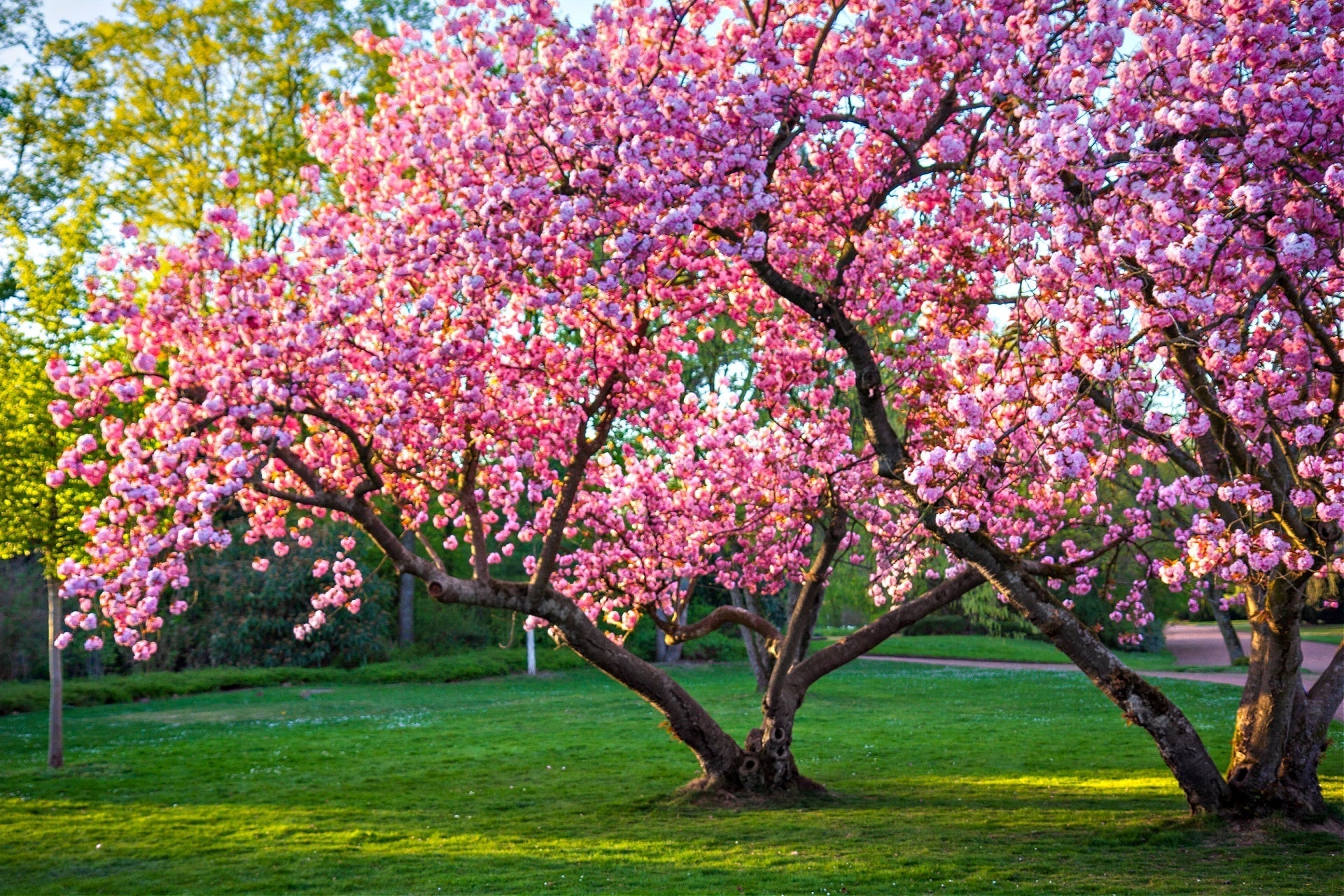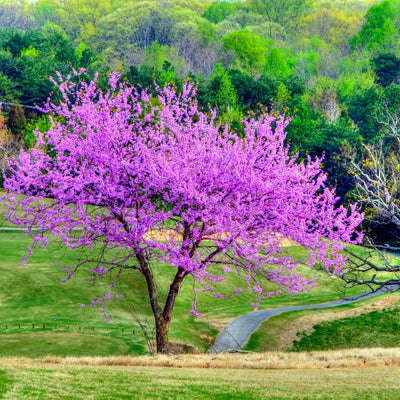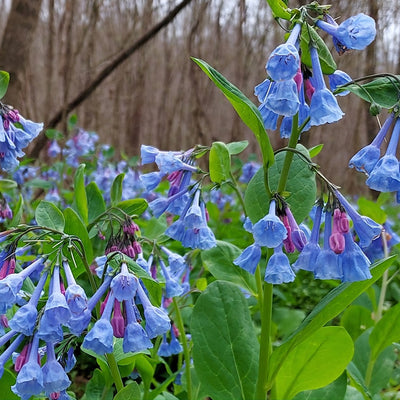Pink flowering trees are a spring garden’s crowning glory. But if you’re a native gardening fan as well as a bloom lover, you’re in luck. Many of the best pink flowering trees are native to North America.
Native trees are an excellent choice for the environment and local wildlife, needing less water and care than non-native species. When they bloom, their flowers support native bees and butterflies, hummingbirds, and even songbirds.
In this list, we feature our favorite Pink-Blooming Native Trees that are both environmentally beneficial and good-looking. From the classic Eastern Redbud to less well-known choices like Pawpaw and American Plum, these deciduous trees add soft romance and dependable ecological value to home landscapes all over the U.S. We’ve also included expert growing advice, where to buy, and more.
Why Pink Flowering Trees Brighten Every Landscape
In any garden, trees that blossom pink flowers are a sign of new life and happiness. Their gorgeous hues make the space feel warm and peaceful, and they attract pollinators like bees, hummingbirds, and butterflies. These pink flowers for garden design give charm and color that lasts from spring through summer, whether you're landscaping a small yard or an open expanse.
Benefits of Planting Native Pink Bloom Trees
Native pink flowers do more than look nice; they also help keep ecosystems in balance and maintain biodiversity. These trees don't need much care, can survive dry spells once they're established, and are very important for native pollinators. You support the local ecosystem by choosing native plants, and you also make a beautiful landscape.
For a layered look under the trees' canopy, plant perennials like Virginia Bluebell or Blue Vervain with your native trees.
Best Native Trees That Bloom Pink Flowers
1. Eastern Redbud (Cercis canadensis)
The Eastern Redbud (Cercis canadensis) has an exquisite display of tiny magenta flowers that bloom before leaves appear in early spring. The pink flowers cluster along branches and stems and also grow right on the trunk, for a magical effect. Native bumblebees and solitary bees pollinate Eastern Redbuds, so they also provide a valuable nectar source for native pollinators after honey bees have emerged in spring.
Eastern Redbud trees reach a mature size of 20 to 30 feet tall at the top end of their range, such as in Zones 7–9, and smaller further north. They tolerate full sun or part shade and need little care or water once established. Summer foliage is glossy green, heart-shaped, and deciduous. In fall, the leaves turn bright golden-yellow.
2. Native Crabapple (Malus coronaria)
Native crabapple trees like Malus coronaria and M. ioensis are a great choice for native gardens or wildlife habitat, despite the reputation of ornamental crabapples as invasive. These trees burst into pink flower clusters in late spring, along with a heady fragrance. They support many native bees and butterflies, and the crabapples themselves provide food for songbirds and small mammals in fall and winter.
Grow them in Zones 4–8 in full sun with an average, fertile soil. Native crabapple trees get about 15–25 feet tall and wide and should be pruned in winter to maintain their shape and remove crossing branches. If you’re into the history and folklore of our native plants, these are also of interest as one of the first North American fruits and medicinal plants.
3. Pink Flowering Dogwood (Cornus florida ‘Rubra’)
Cornus florida ‘Rubra’ is a pink form of native Flowering Dogwood, a tree you probably already know and love. Dogwoods show off amazing layers of rosy-colored bracts instead of petals each spring. They’re native to eastern U.S. woodlands, making a great addition to any woodland garden or native understory planting.
The tiny blooms support native pollinators early in the season, and red berries on female trees later in the year feed songbirds and small mammals. Plant this small tree in Zones 5–9 in a spot with dappled or morning sun and afternoon shade. It does best in acidic soil rich with leaf mold or compost.
Dogwoods are a mainstay of woodland gardens, appearing under the shelter of larger trees and lighting up understories with their blooms. If you’d like more information, this USDA fact sheet on native flowering dogwoods and their ecological role is a .gov resource that we recommend.
4. Pawpaw Tree (Asimina triloba)
It may not be the first tree you think of when you imagine pink blooms in the landscape, but Pawpaw deserves a place on this list of tree blooms pink flowers. This native understory tree has unassuming maroon-pink flowers that appear before leaves in spring. While they are not showy, they support beetles and flies that are the tree’s primary pollinators. Later, Pawpaw produces the largest edible fruit native to North America.
Grow pawpaws in Zones 5–9 in moist, fertile soils with good drainage. They prefer full sun but tolerate some shade when young and once established, though fruit production is better in full sun. If you want a good crop of Pawpaw fruit, you’ll need to plant two or more because pawpaws are clonal and produce better fruit with multiple individuals nearby.
If you’re a native gardening fan, you’ll also love Pawpaw for its tropical-looking leaves and its ability to attract the zebra swallowtail butterfly.
5. American Plum (Prunus americana)
If you love trees that are smothered in a cloud of pastel pink to white blossoms each spring, then you need to consider the American Plum for your landscape. Not only is the tree pretty, but the fruits that appear in summer are adored by wildlife and also make excellent jams and preserves.
American Plum trees can form a thicket in naturalized areas, and you’ll find them in wetter spots like along streambanks and ditches. Plant them in Zones 3–8 in full sun and a soil with good drainage. This tough tree reaches around 15 feet tall, so it’s excellent for hedgerows and other naturalized areas where you want suckering and self-seeding growth.
Designing with Native Pink Trees in the Garden
Native pink trees help restore lost habitat and corridors for pollinators and wildlife. By planting redbuds, dogwoods, crabapples, and other native species, you’re not only creating a beautiful garden, but you’re also improving your local environment by improving soil quality, adding organic matter, and even regulating microclimate through shade and moisture retention.
As always, we recommend using native trees in layers. Plant smaller shrubs, ferns, and perennials like columbine, foamflower, and Virginia Bluebell under native trees and you’ll support diverse native wildlife, extend bloom time in your yard, and create beautiful, layered landscapes with texture and visual interest from spring until fall.
Another important tip for designing with native trees is to select for succession blooming so that as one species goes out of bloom, another is coming into flower. So plant more than one type, and when you add native trees to your landscape over time, add different species.
Finally, avoid cultivars with little or no nectar or other ecological benefits. While most pink flowering trees will attract pollinators and wildlife, some ornamental species are chosen for their showy blooms but offer little or no benefit to wildlife.
Final Thoughts on Pink-Blooming Native Trees
Pink trees are magical. Planting a blooming tree in your yard is an invitation to spring. But if you also plant native trees that bloom with pink flowers, you invite wildlife and a restored environment as well.
Eastern Redbud, Native Crabapple, Dogwoods, and other native pink trees are as classic as roses, but with the bonus of dependable native wildlife value and excellent year-round habitat. You’ll thank yourself all season long with the gifts these native beauties bring.
Bringing Pink to the Landscape with Native Trees for Sale
At TN Nursery, you’ll find all of our native trees organically grown and ready to ship to your home. Our beautiful assortment of pink flowering trees for sale will help you get started with pink native trees in your yard.
FAQs
What kind of tree blooms pink flowers?
The Eastern Redbud, Pink Dogwood, and Native Crabapple are all trees that bloom pink flowers.
What is the longest blooming pink tree?
The Pink Dogwood and Eastern Redbud usually have the longest times when they bloom.
When do pink flowering trees typically bloom?
Most trees that produce pink flowers do so in the spring, however the exact time depends on where you live.
Can pink bloom trees work in small yards?
Yes. For small gardens, Eastern Redbud and American Plum trees are great choices.
How can I pair pink flowering trees with other plants in the garden?
To add more color and attract pollinators, mix with perennials like Blue Vervain or Virginia Bluebell.




